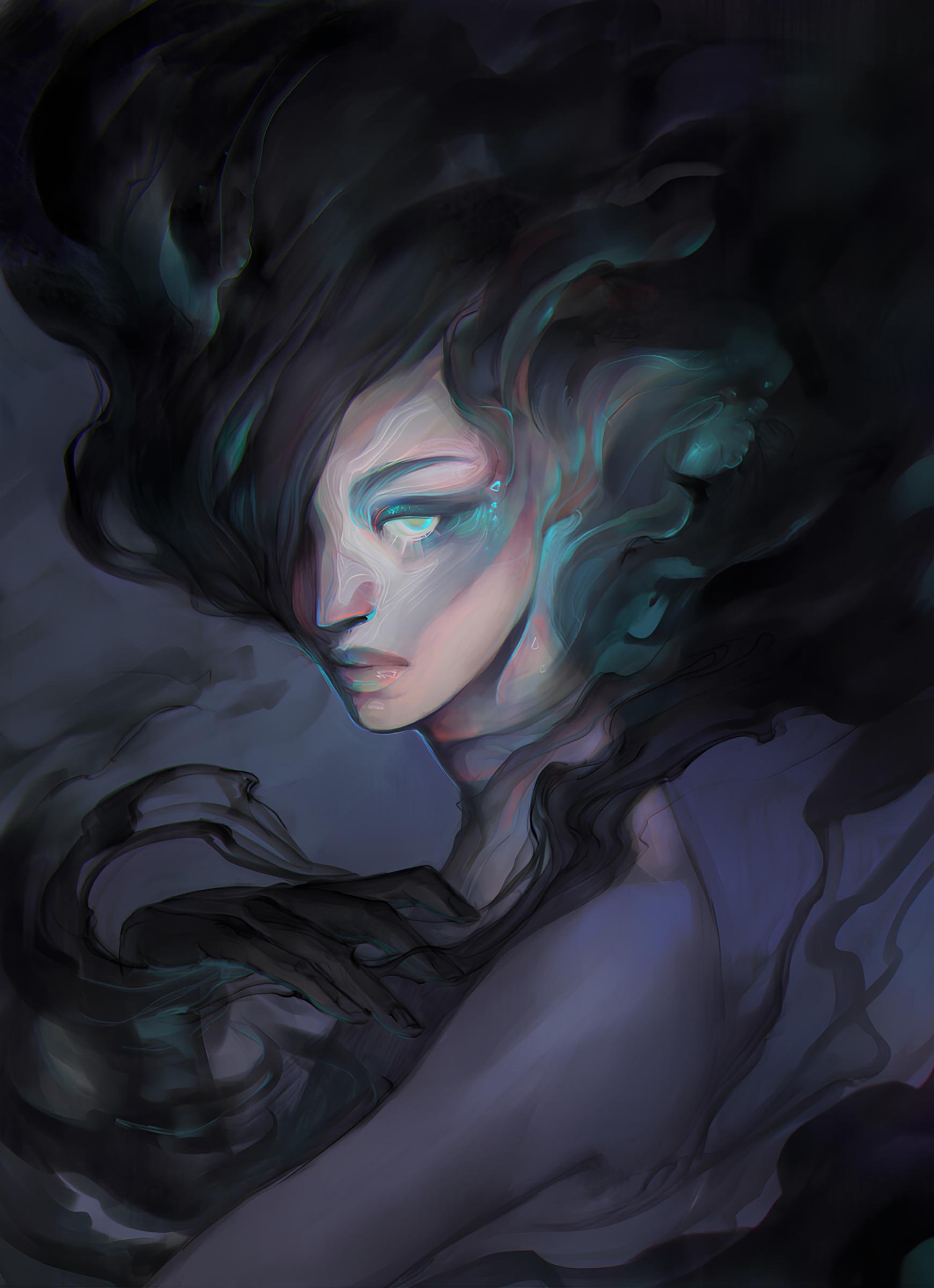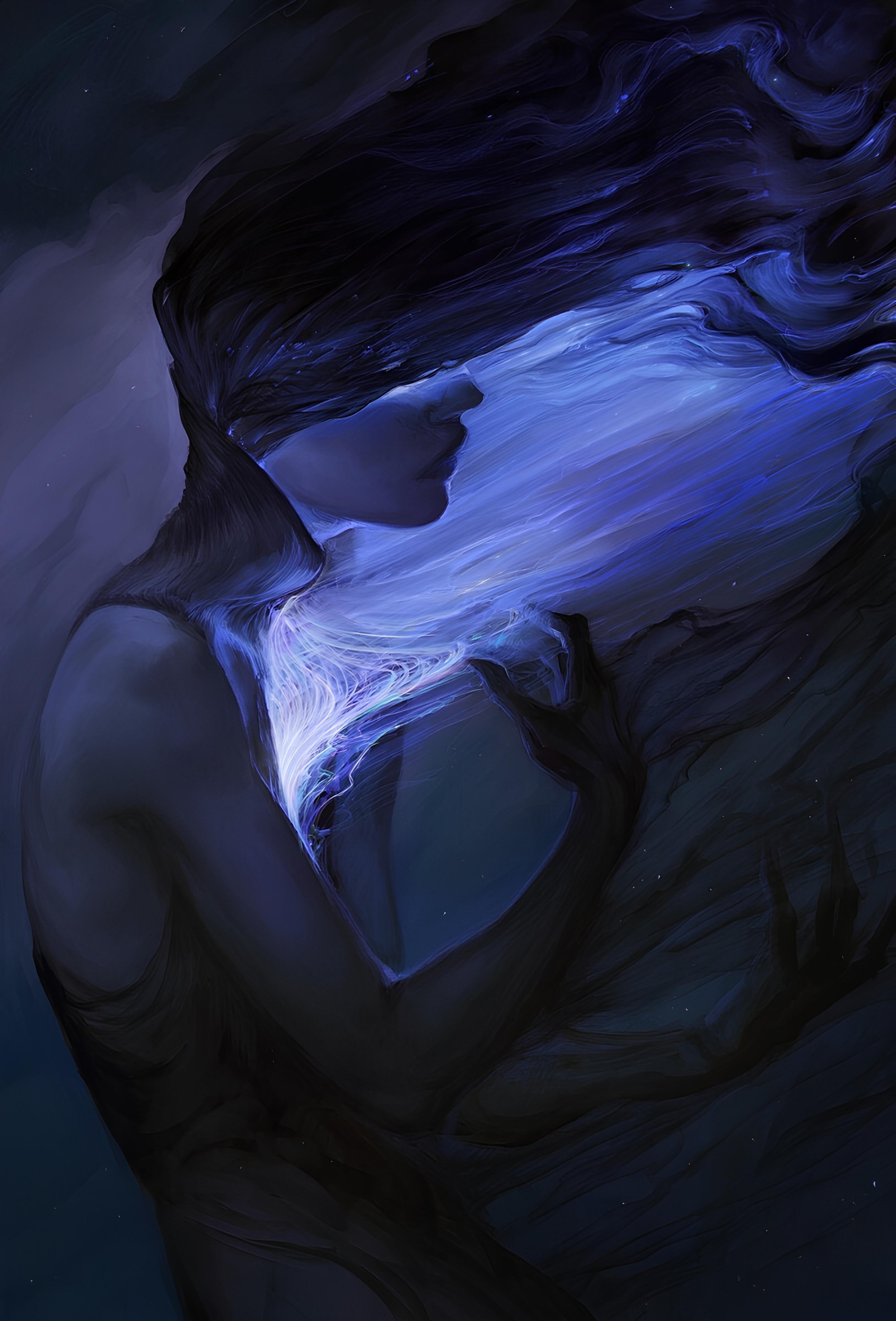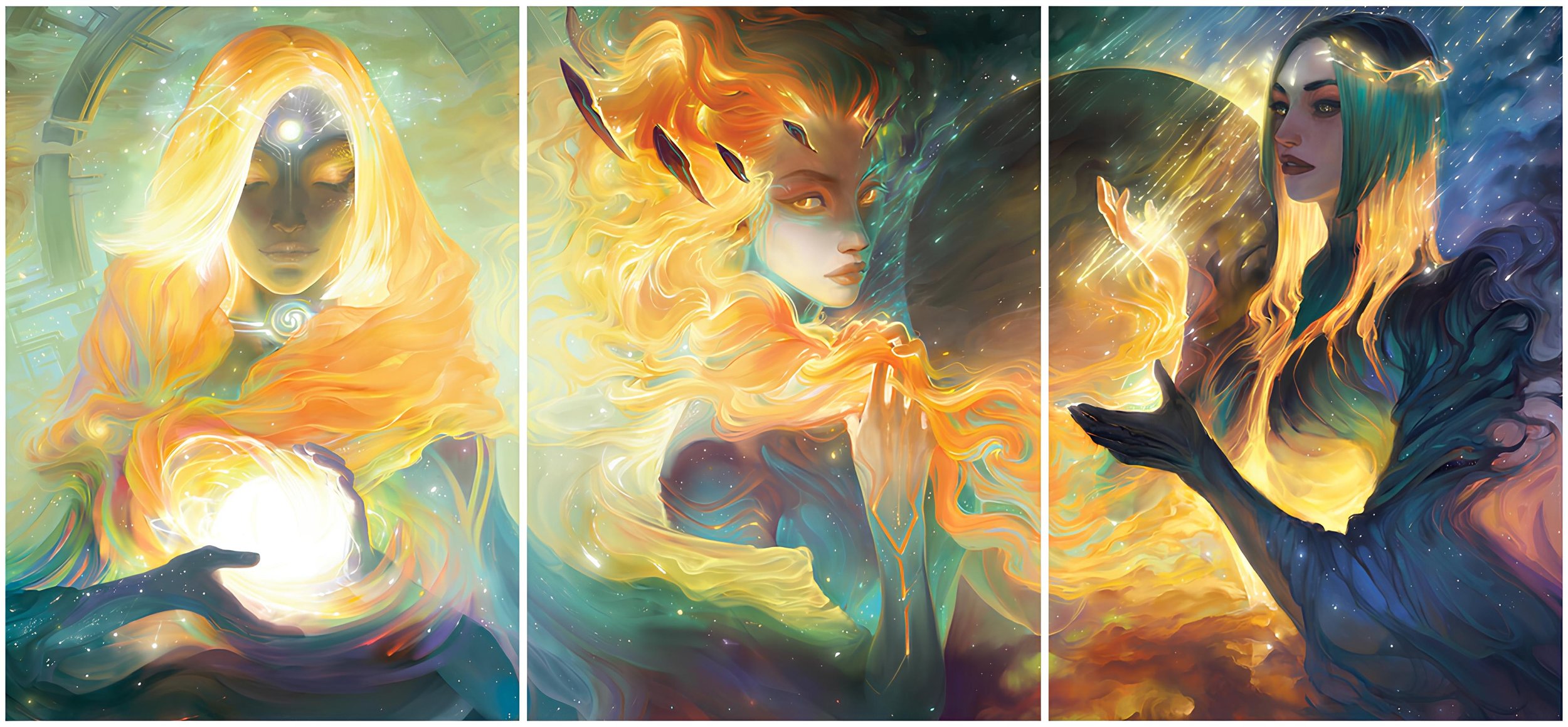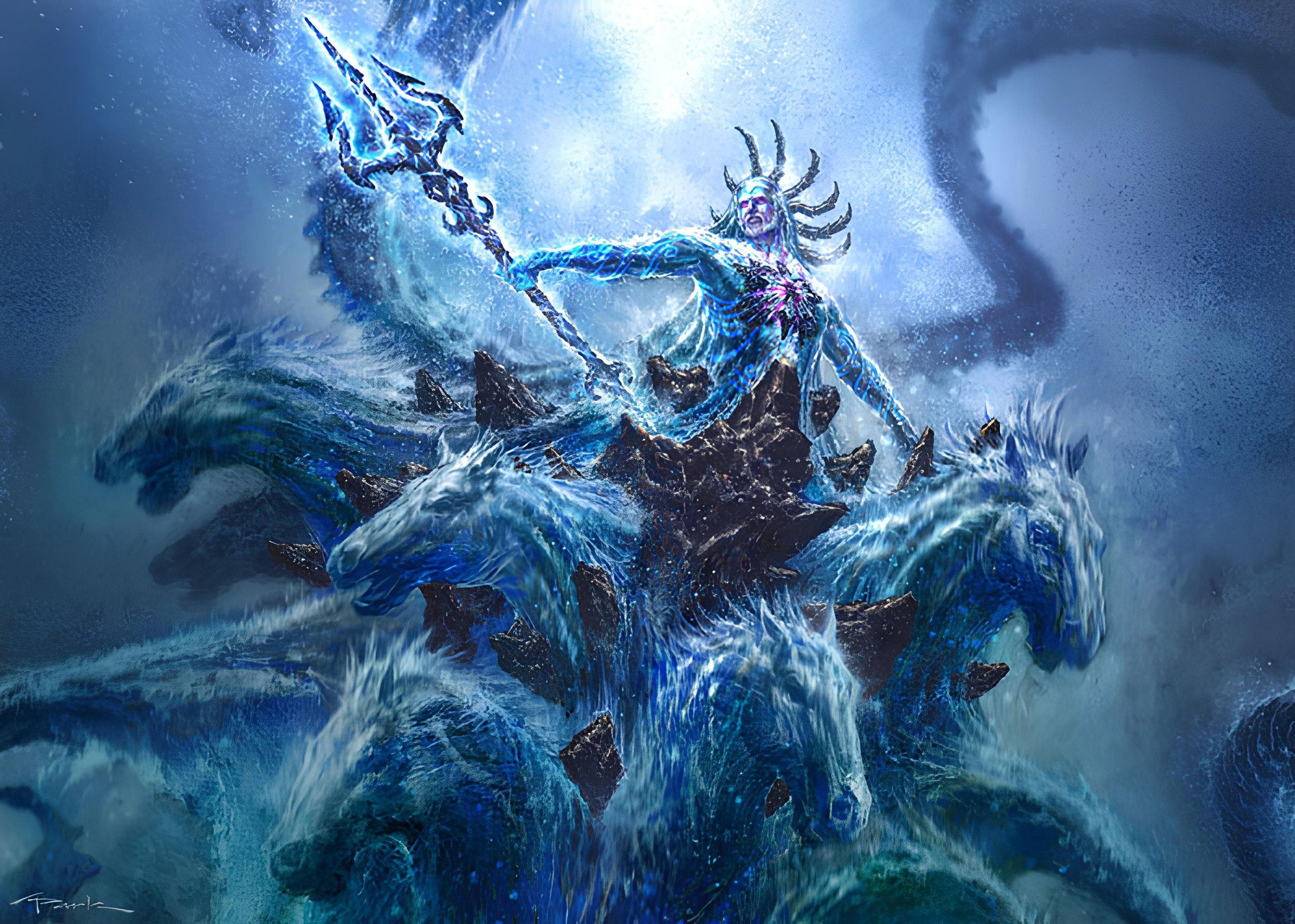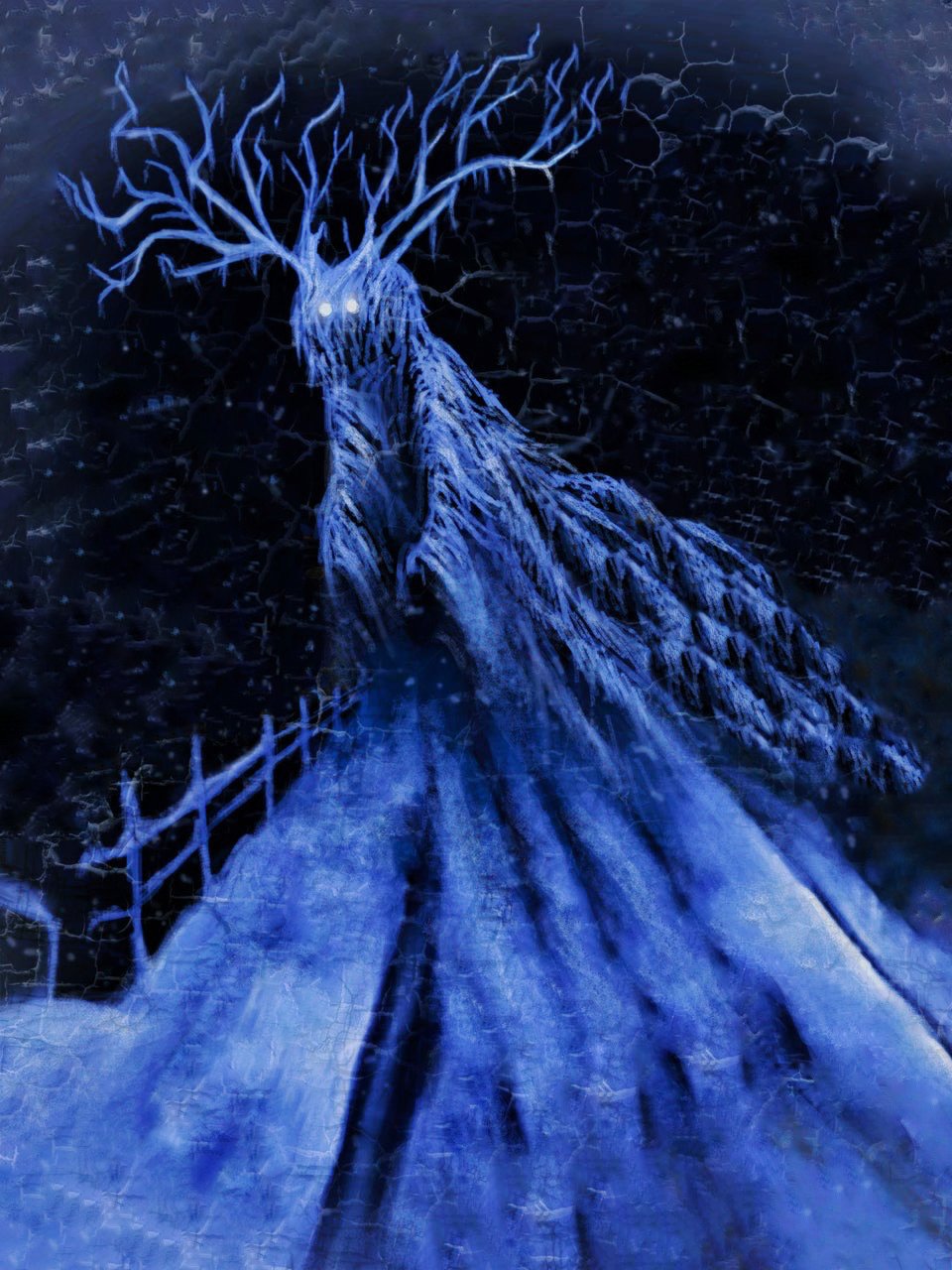
Aurora
Aurora light is the god of spectacle and the event of the aurora, the unpredictable event that cause aurora and its colorful shine on the world. He is the second highest in the luminated pantheon and is the husband to Eclipse. His symbol is a band of colored light to show the aurora and its beauty. He lives in the luminated realm alongside eclipse and moves around the disk. She is worshiped by the deception of beauty, trying to convey the personal experience of beauty to others with art of words or community.
Summer Solstice
Summer solstice is the god of summer solstice and the longest day of the year, of joy and happiness and light. She is part of the luminated pantheon and the sister to Equinox and winter solstice. Her symbol is a sun with eight rays, for the eight fold nature of the months of the year. She lives on the luminated realm on the main disk with her sisters. She is worshiped by the celebration once a day at the solstice, a common practice is to wake up before first light and sleep after last light so you get the fullness of the day.
Eclipse
Eclipse is the god of triumph, when the moon for a brief moment defeats the day and interrupts the cosmic dance. She is part of the luminated pantheon and is considered the highest of importance, she is the wife to Aurora. Her symbol is a moon in front of a sun, showing the literal effect of the eclipse. She lives in the luminated realm with the other gods, in its upper layer moving around the disk. She is worshiped by the tracking of the celestial bodies, and event of a eclipse are quite a festival.
Equinox
Equinox is the god of the two equinoxes, the balance of things and of order. She is the part of the luminated pantheon and is the sister to winter and summer solstice. Her symbol is a half moon half sun, to show the balance of light and dark. She lives in the luminated realm on its main disk with her sisters. She is worshiped twice per year, and often the theme of memory of the last equinox and the balance of life is practiced.
Star light
Star light is the god of the stars and constellations, the hidden and unknown ways we benefit in the world. She is part of the luminated pantheon and has many forms and shapes through the year and its cosmic dance. Her symbol is the famous bull constellation, as its visible most of the year in the north. She visit the luminated realm but she also fills the skies of vorpal space with stars. She is worshiped by the tracing of stars, the understanding of the universe and using the stars to guide.
Winter Solstice
Winter solstice is the god of the winter solstice and the growing darkness, of memory and nostalgia. She is part of the luminated pantheon and the sister to Equinox and summer solstice. Her symbol is a moon with a snow flake on it, for the winter and the most amount of night. She lives on the luminated realm on the main disk with her sisters. She is worshiped once a year on the solstice but warding and preparation for a week or so before occurs, gathering of people are held indoors and good food had.

Dawn
Dawn is the god of transition to day, of alertness and excitement. She is part of the luminated pantheon and is part of daily activity and so is quite common. Her symbol is a half rising sun, for the transition from night to day. She lives in the luminated realm and orbits the disk, in the cosmic dance. She has small morning prayers to invite and ask for a good day, that are practiced by some each day.
Noon
Noon is the god of light and the high sun, the bright shine of day light and life. she is part of the luminated pantheon and the most often celebrated as most are awake at noon time. her symbol is a risen sun with twelve rays for the positivity of day light, and the twelfth hour that noon occurs at. She lives in the luminated realm and orbits the disk, in the cosmic dance. She is worshiped by a general midday time, often a short prayer at lunch but its very informal.
Dusk
Dusk is the god of the oncoming transition to night, of calmness of peace. She Is part of the luminated pantheon and is quite enjoyed for the beautiful sun sets and dimness of the world. Her symbol is a setting sun, to show the transition from day to peaceful night. She lives in the luminated realm and orbits the disk, in the cosmic dance. She is worshiped each evening with thanks for the day and a short prayer or a ritual offering of small scale.
Midnight
Midnight is the god of darkness and the lack of sun, the sad times. She is part of the luminated pantheon and enjoys the solitude of a quiet and dark world. Her symbol is a moon above the world, the fullness of night and its tranquility. She lives in the luminated realm and orbits the disk, in the cosmic dance. She is worshiped quite little but by those who are awake at her hour she is celebrated in the differentness of experience and it all.
The Seasonal sisters
The seasonal sisters are a set of twelve gods within the luminated pantheon, each sister represents a specific time of year, broadly they are the three winters, the three springs, the three summers and the three falls. Early winter, deep winter, later winter, first spring, bloom spring, warm spring, small summer, midsummer, hot summer, light fall, shift fall, late fall. Each one has a set of days in the year, most are 4 weeks for 28 days but some have extra or fewer days with interactions to others gods. each in turn has certain rituals and practices associated with them. A symbol to broadly represent the full cycle of seasonal sisters is the luminated disk, a disk with twelve sections that shows the had the sun and moon in the middle, this represents the totality of the yearly cycle. These sisters all dwell in the luminated realm on the disk and are in a cosmic dance of passion and trade for all time. they are worshiped with minor holidays in each of their time periods to celebrate, gatherings and offerings done but this practice is very informal.

Nalmoria
Nalmoria is the god of chaos, in all its unexpected and random nature, no one domain as to be unpredictable is the goal. They are part of the chaos force, they work for all chaos. They have no symbol, as to pin down any symbol to this chaos is impossible. They live in the border forests to the Underchaos, wondering the edges of the Underchaos and exploring. They are worshiped by performance of chaos and the spending of time and resources to make the world more chaotic
Gzentlhi
Gzentlhi the god of unified chaos, the contradictive force that tries to unify and guide chaos, while not always successful the gods are able to cause more chaos when working together. They are part of the chaos force and considered a leader. Their symbol is an upside down triangle with a smaller triangle crossing the top line, to signify a balance between good and evil and the most completeness in the force. They live deep in the Underchaos, near the elemental singularities. They are worshiped very little but with acts of planned out chaos, to organize spontaneity, a contradiction yet still effective.
Ak’ahra
Ak’ahra is the god of chaotic circumstances, the churching nature of good luck and bad at unexpected and random times. They are part of the chaos force, they parallel Mehain and Eletov in the nature of circumstances. Their symbol is two downward points and an upward point intersecting the two, to show a building down and up, that both good and bad things can happen. They live in the Underchaos, near the geometric area, a form of chaos in the stability with shapes that cannot exit. They are worshiped in making circumstances unique and difficult, but the main form is ultimate spontaneity and randomness, to always be doing something new and to never repeat.
Dzensla
Dzensla is the god of chaotic flesh, the unbound unpredictability between good and evil flesh and the act of the unknown. They are part of the chaos force, they parallel Yarak and Anjar in the nature of flesh. Their symbol is a downward point with a line crossing it, to show an incomplete and open chaotic nature yet still a connection to the idea of flesh. They live in the Underchaos near the bleed of the realms of flesh where it becomes unpredictable. They are worshiped by acts abhorrent to the flesh, to self sabotage and to build up, to harm and help others.
Vsnlagya
Vsnladya is the god of chaotic thoughts, the maddening fluctuations between clarity and distraction and primal thought and human rational. They are part of the chaos force, They parallel Ulos and Despal. Their symbol is an infinity like symbol or an hour glass, it shows a collapse of idea and the destruction of reason. They live in the Underchaos near the realms of the mind, the pure leaching energy of the mind transformed into a worse state. Their worship is the inducement of chaotic thoughts, excessive usage of drugs and meditation and other transformative measures is at play, and the spread of these thoughts to others.

Blansira
Blansira is the god of black and white, and the spiritual world. She is the god of the spiritual realm and the non physical aspects of the world, the soul of the world. She is part of the Velngi bird pair and is the sister to Arkensol. Her symbol is a black and white upside-down mountain to reflect the invisible spiritual world. She lives in the Lori’i realm around Ulos. She is worshiped by spiritual practices that focus on the inward spirit of the land and the self.
Arkensol
Arkensol is the god of colors, beauty and the material world. She is the god of the physical beauty in the world, the physical landscape and features. She is part of the Velngi bird pair and is the sister to Blansira. Her symbol is a mountain with a colored sky above to show the beauty of the world all around us. She lives in the chromatic realm and in the spirit of all the land. She is worshiped by the reverence for the land and respect for nature and its beauty.
Mequestala
Mequestala is the god of life, light, beauty, art, and goodness. She represents the human flourishing and the caring presence for humanity and its growth. She is part of Harashi dualism and the sister to Oremdansik. Her symbol is golden amulet to show the purity of life and its spectacle. She lives in the desert realm and in an eternal battle with Oremdansik. She is worshiped by building places or worship, to make artwork in communal spaces and to offer gifts to her.
Oremdansik
Oremdansik is the god of death, darkness, sin, and evilness. He is the oppositional force, to see a world without humanity and destruction of the world. He is part of Harashi dualism and the brother to Mequestala. His symbol is a feather made of ash, to show death and finality of life. He lives in the desert realm and in an eternal battle with Mequestala. He is worshiped out of fear, to appease and ward him off, sacrifices of food or water and incense.

Jwen
Jwen is the god of secrets and mystery, she replaced the former god of secrets and also has dominion over all things unknown. She is worshiped in hidden pockets in the west, often aligned with the Geldic god Zahash. Her symbol is an ouroboros with an eight pointed star, this represents the mysterious meaning of her existence and the self-consuming nature of secret identity, for the greatest secret will eventually be lost. It is unknown where she lives, but it assumed to be in the Underchaos. She is worshiped in small hidden groups with strange rituals of attempting to be become hidden and unknown, to disappear.
Veren
Veren is the god of the old and vengeful forest, she is the more angry aspects of nature and the older tradition. She is from Fonaris but does not work well with Fonaris, she is disagreeable and spitefully. She lives in the forest realm but away from other vorpal beings. She is worshiped by practices of death alongside new life, such as burring a dead fish when planting new crops.
Ezenkhel
Ezenkhel is the god of final death, the transition from the vorpal into the scattering of the soul and the destruction of the eternal soul, he is the final shepherd and all mortal souls will go to him eventually. He is a stand alone god, and broadly worshiped in the north, Kotak and Thalia. His symbol, is a circle with four points intersecting the gateway of final death. He dwells in the realm of mists at the border between vorpal space and the Underchaos. They are little worshiped in the world but offerings are small given, incense and rituals and rites.
Delas
Delas is the god angry and ancient seas, of waters harsh and unstable. He is an older god and a progenitor to Saladusina. He is an ancient elemental god and over water and the oceans and has faded with the rise of Saladusina. His symbol is a trident, to show the mighty command and power of the seas. He lives in the endless storm that goes around the great seas and oceans in vorpal space. He is worshiped primarily by blood sacrifice and a practice of ritual drowning, where in someone is drowned and brought back in quick succession.
Aelosum
Aelosum is the god of beauty, pleasure, and sex. She is representing the carnal pleasure and expression in life. Associated with both men and women, and the sacred connection of marriage. Her symbol is a pair of wings, one black one white each with a spot on the other to represent the mix of femineity and masculinity. She is a stand-alone god and is worshiped all around the world by many people. She lives in the black ball room in vorpal space. She is worshiped by the act of sex and its purity, the celebration of pleasure and the joy in the simple desire.
Frontril
Frontril is the god of the frost, ice and cold death. He is the ancient god of cold and frost, a once far more worshiped god but has sense fallen in favor. She is a standalone god who us related to Saladusina. His symbol is a snowflake, the ever frozen representation of the life during the collapse. she dwells in the ever frozen realm ice realms and is solitary, having few followers or beings. She Is worshiped very little, clinging on to a few scant followers, those who do worship do so with ritual self punishment and cold based harm to the self and others.





